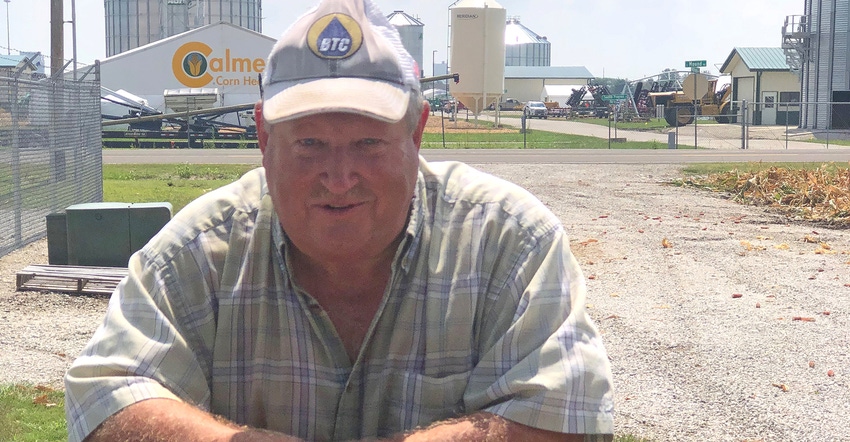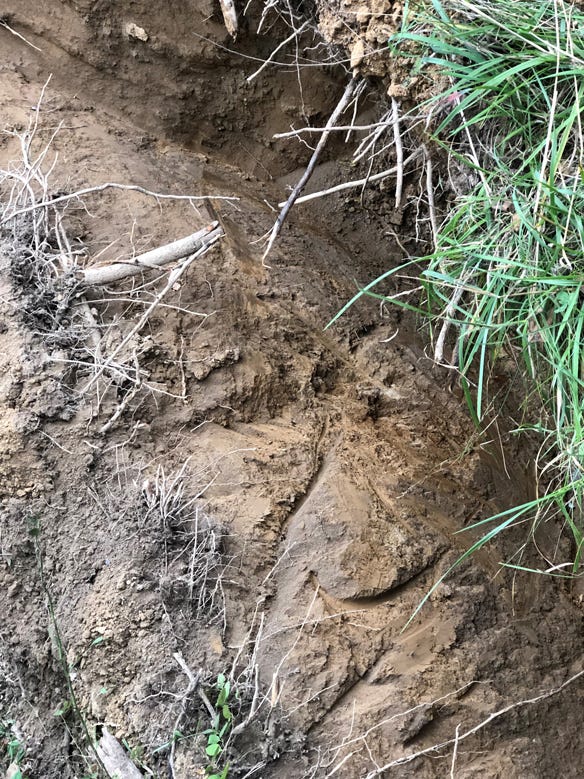November 11, 2021

You may have read in the November issue of Indiana Prairie Farmer in the Salute to Soil Health column that Tony Bailey and Cecelia Tharp are thankful for Indiana soils. These two conservationists said overall, Hoosiers have it “pretty good” when it comes to soils.
For the most part, we agree. But some people in southern Indiana who deal with hills and shallow depths to limiting layers may disagree. The neat part is that in many cases, even people with those soils are figuring out how to make them productive, often with no-till and cover crops.
Prime example
The Indiana 4-H and FFA state soils judging contest was held in October on land owned by Vincennes University at the Jasper campus. The Dubois County Soil and Water Conservation District undertook a challenge to demonstrate how conservation practices could improve that land several years ago, in cooperation with the university.
A soils judging contest consists of four pits. One pit in particular illustrated how challenging soil in that part of the state can be, for agricultural use or as a potential homesite. This soil was severely eroded from decades ago, with moderately clay topsoil and clay in the subsoil. It was on a 3% to 6% slope but was somewhat poorly drained. To make matters even more challenging, the parent material was weathered bedrock, but a fragipan formed in the loess blown in over centuries above the bedrock. And the fragipan, which limits root growth, started 14 inches below the surface.
Finding either a fragipan or bedrock in the top 50 inches is only common in parts of southern Indiana, and then you don’t typically find them in the same hole. Talk about a learning experience!
“It’s unusual, but it happens — veteran soil coaches in southern Indiana have found them before,” says Randy Staley of Staley’s Soil Service, Clay City. Staley was one of the officials for the 2021 state soils judging contest.
Contest winners
“Fragipans are irregular, but that is how Mother Nature made them,” Staley says. “The soil for this pit wasn’t mapped as having a fragipan, but another soil type in the field was, and there were other fragipans in the contest.”
Staley says they found a similar situation at the Southern Indiana Purdue Agricultural Center farm near Dubois when digging practice pits. Bedrock parent material and fragipans were in the same area.
“We dug in one pit and didn’t find a fragipan, moved over 3 feet and found a distinctive fragipan,” he recalls. “They developed in loess material above older till or bedrock, but they can be inconsistent from one location to the next.”

Congratulations to the top five winning teams in FFA and 4-H at the state contest. In FFA, placings were:
Southmont FFA (Montgomery County)
Franklin FFA
Orleans FFA
Indian Creek FFA (Johnson County)
North Miami FFA
Southmont also won the very first soils judging contest of the year, the Farm Progress Invitational in Decatur, Ill.
The top five 4-H teams were:
North Miami
Adams Central
North Miami again
Kankakee Valley
Batesville
Comments? Email [email protected].
You May Also Like




